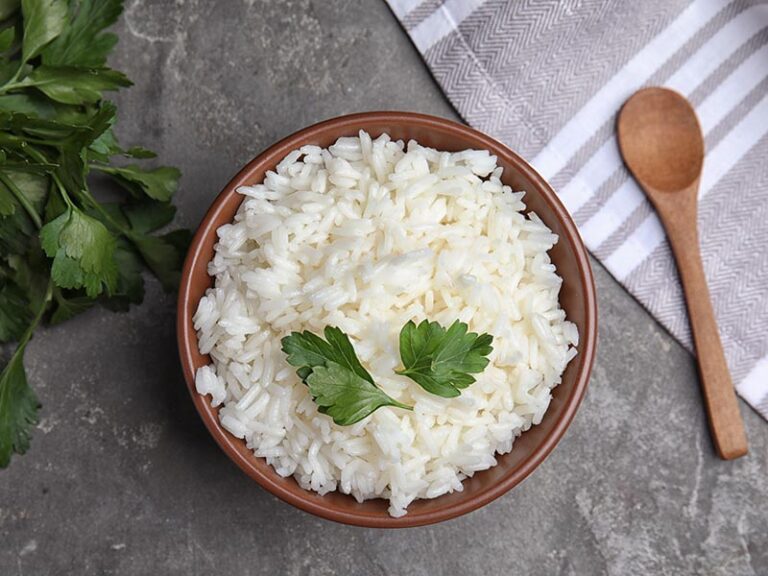How diverse are cocoa powder substitutes? Cocoa powder is a familiar ingredient to both professional and amateur bakers. It helps your cakes look amazing with the reddish brown color and creates a robust flavor that is hard to resist.
But sometimes cocoa powder might not be a readily available item. So what to do when you are in this circumstance? Rest assured that there are many things you can use to replace them. In fact, some of them are essential condiments in your kitchen.
This article features a wide range of cocoa replacements and the pros and cons of each. Thus, stick to the end and don’t skip any part!
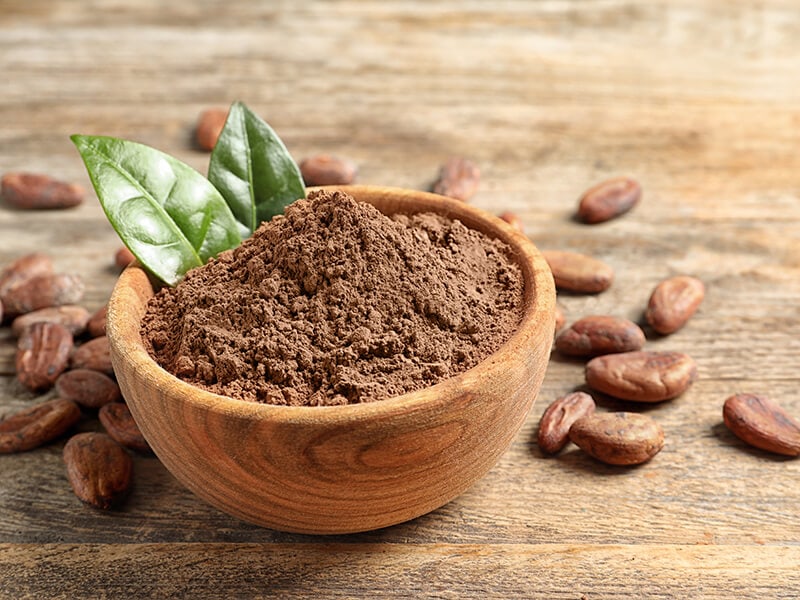
An Overview Of Cocoa Powder
Cocoa powder might not be a new term. But it mostly appears in the packaging, so few people know where it comes from. Don’t worry, as it won’t happen to you!
Cocoa Powder Origin
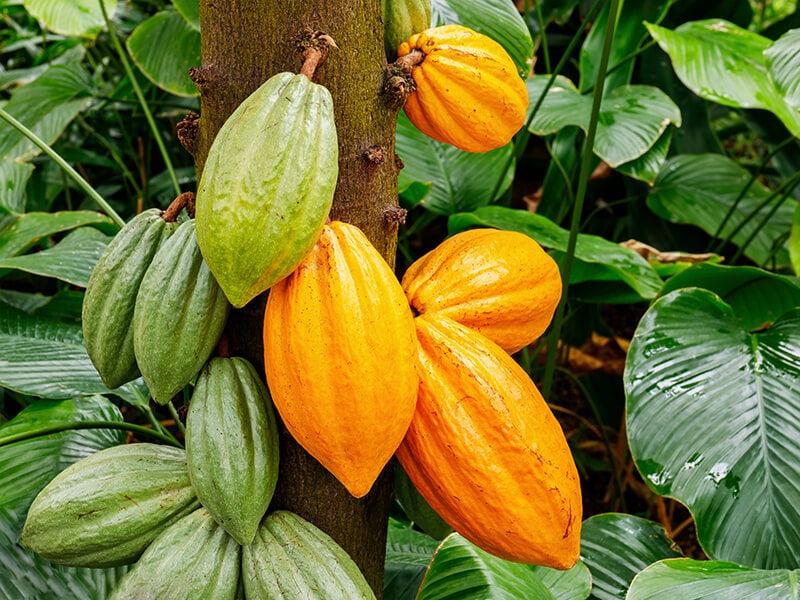
Cocoa powder is a powdered product made from the fruit of the Theobroma cacao tree. It is a small evergreen tree in the Malvaceae family. The fruits of the tree are cacao pods. They are oval, long, and wide. When they ripen, the color turns yellow or orange.
Cacao beans are seeds held inside cacao pods. Each pod contains 20-60 seeds covered with a white pulp. Cacao seed is the main ingredient in cacao products, including cocoa powder and chocolate, while its pulp is used for jelly, cream, smoothies, or juice.
Although cacao and cocoa sound similar, people usually use the word cacao for the plant, the fruit, or the unrefined products of the Theobroma tree. On the other hand, cocoa mainly comes from cocoa powder – a type of processed item from the tree’s beans.
Now, cacao powder and cocoa powder is the real puzzle here. But you’ll get it in no time. Cacao powder is a powdery form of unroasted cacao beans. Meanwhile, cocoa powder undergoes a roasting process before being ground into powder.
How Cacao Fruit Becomes Cocoa Powder
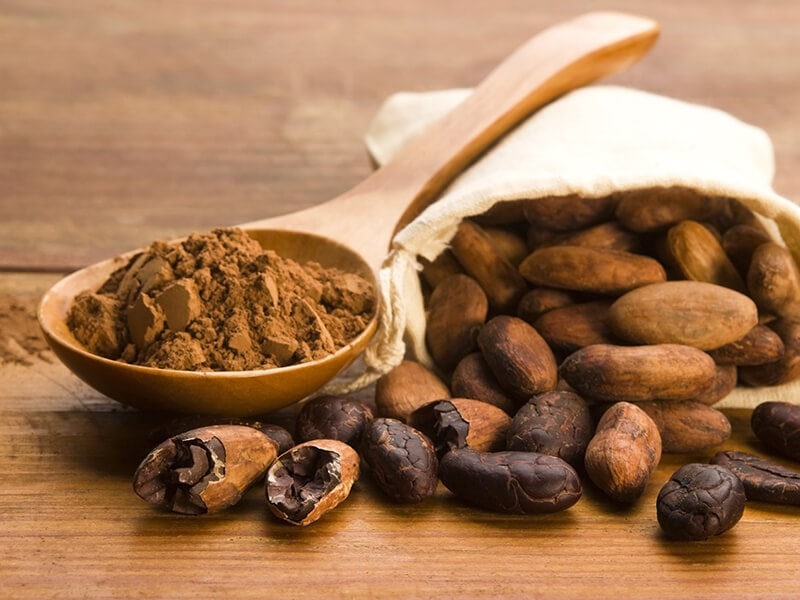
Cocoa fruits undergo many processing stages to become beautiful dark powders. After harvesting, cacao beans will be fermented for several days and dried under the sunlight.
Then, they obtain the dark color and fragrant odor via roasting. When broken, the roasted beans become cacao nibs.
Cacao nibs, after grinding and heating, will turn into cacao paste. At this step, the paste still retains some fat, which is later processed into cacao butter. Each cacao seed contains about 40-50% cacao butter (1).
The pressing process eliminates cacao butter until the fat is about 10-24%, leaving a compressed cocoa powder cake. Finally, grinding that cake, you will get the powdery form of cocoa.
With these simple instructions, you can also make cocoa powder at home.
How To Use Cocoa Powder
Cocoa powder is often used as a flavor or color in biscuits, cookies, cakes, and drinks. Its chocolatey and bitter taste adds a whole new dimension of flavor to your food. You can use it to make frosting or coating for many foods.
Cocoa powder has a strong taste and is the most concentrated form of chocolate. Therefore, the powder itself is bitter. You can refer to its flavor as chocolate, but it does not have a creamy note.
When using it for baking purposes, you should mix it with milk or sugar. Milk helps cocoa powder take on a rich chocolate flavor, while the sweetness of sugar can balance the powder’s bitter taste.
Another interesting usage of cocoa you may not know is its use in the cosmetic field. It has anti-aging components and antioxidants and provides moisture for the skin.
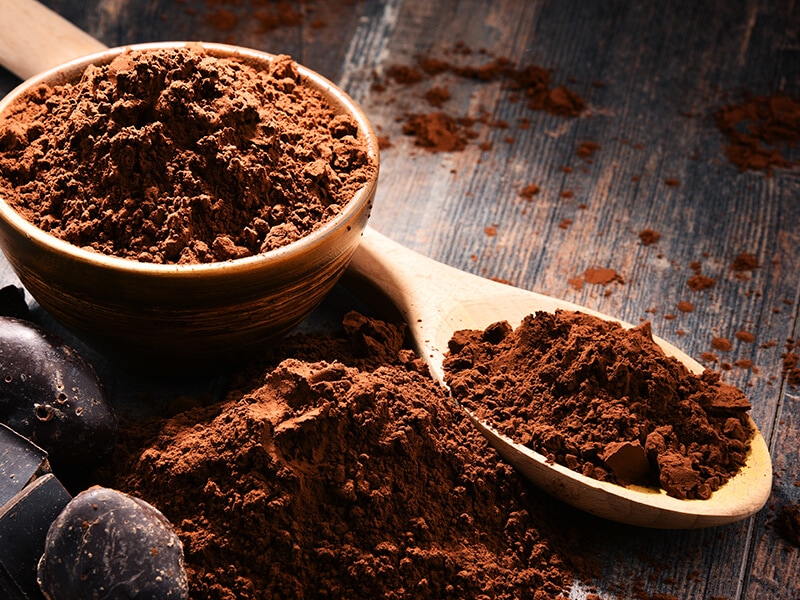
17 Substitutes To Use For Cocoa Powder
Here comes the answer to the question that draws you here. So what are the best cocoa powder substitutes? The table below will provide you with the conversion ratio and some notes so you can have a better overview.
1. Carob Powder
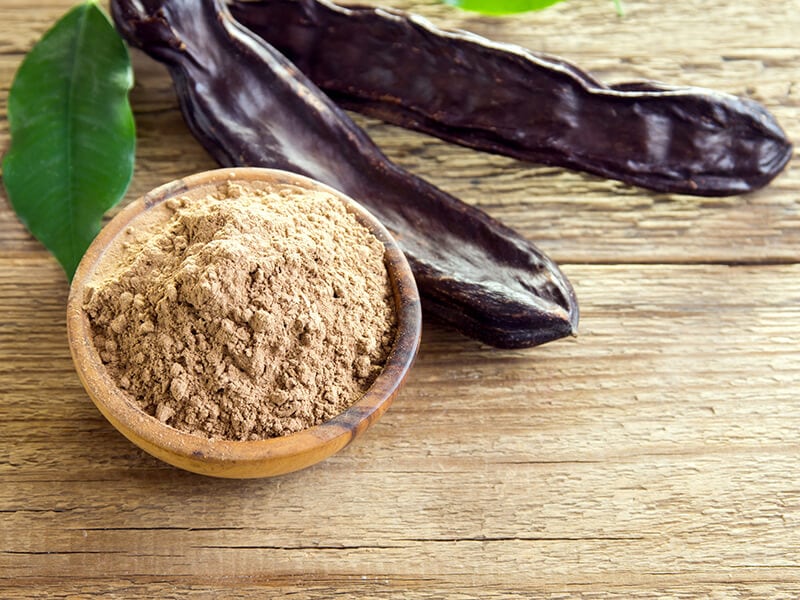
Also called carob flour, carob powder is slightly sweeter and less bitter than cocoa powder. It is made by grinding roasted carob pods. Carob powder is one of the best substitutes for cocoa powder.
It’s not only safe for people with lactose intolerance but also caffeine-free and low in fat (2). This is a great benefit if you have trouble controlling your blood pressure.
However, it contains more carbohydrates and sugar than cocoa powder. In addition, carob powder does not have a distinct chocolatey note.
Instead, its flavor is rather nutty or earthy. Therefore, you can add a little instant coffee or more carob powder to your recipe to enhance its taste.
Carob powder is a one-to-one alternative to cocoa powder, which means a tablespoon of carob flour can replace every tablespoon of cocoa powder. But make sure to reduce sugar levels accordingly.
2. Carob Chips
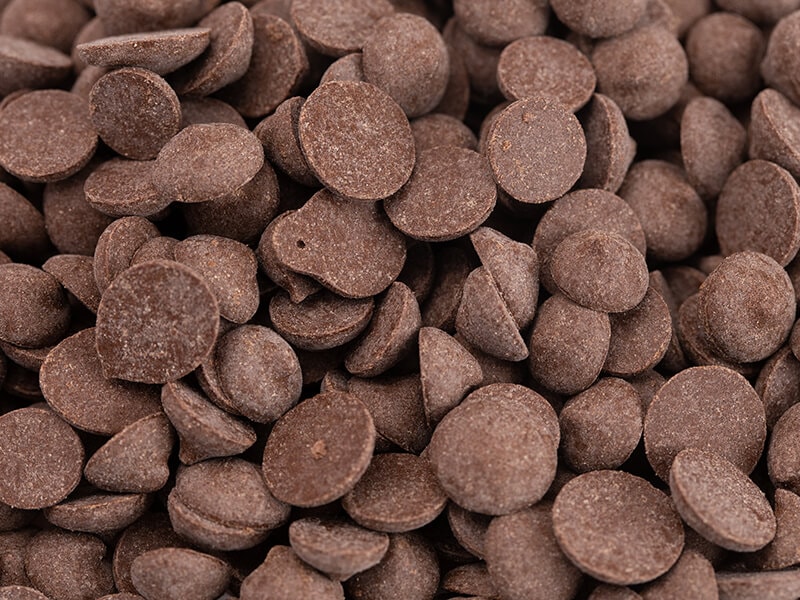
Other than powdery form, carob also appears in chips. Carob chips come from organic carob, cane sugar, and salt. They have an earthy and more mellow flavor than chocolate and can play a role in vegan-friendly treats.
You can measure ½ cup of carob chips and substitute it with 3 tablespoons of cocoa powder. But since they are different in texture from cocoa powder, you should melt or grind the chips before using them.
3. Dutch Process Cocoa
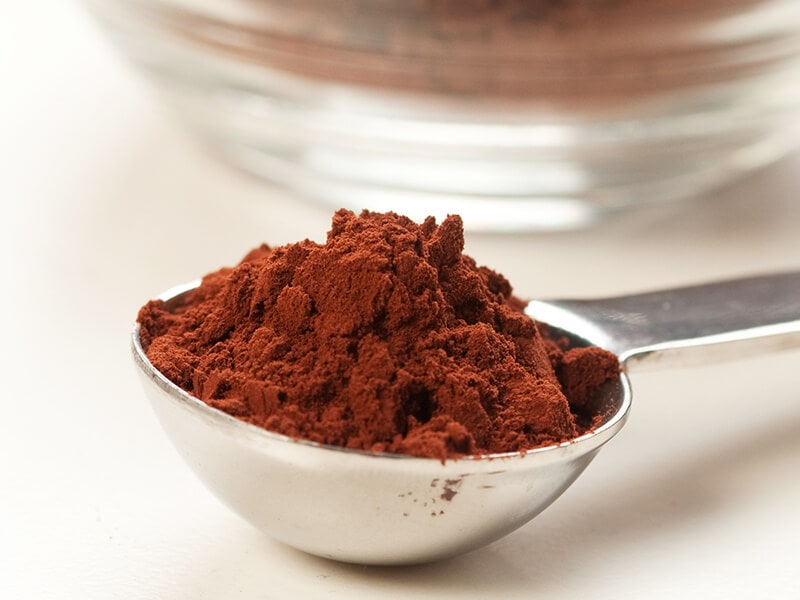
Dutch process cocoa, also known as European-style or alkalized cocoa powder, is a variant of cocoa powder. It is darker and more mellow in flavor than cocoa powder.
Natural cocoa powder is acidic; hence it has some taste of sourness and bitterness. Dutch process cocoa is treated with an alkalizing agent to reduce this acidity content, making it less bitter.
The advantage when using this type is that you don’t have to calculate anything. Just replace the exact same amount (1:1) as you would with cocoa powder. But you want to watch out for the differences in color and flavor.
If your recipe does not include an acidic ingredient like lemon, vinegar, or citrus juice, just add ⅛ teaspoon of baking powder for every 3 tablespoons of Dutch process cocoa. Cream of tartar will work too.
Understanding the differences between natural and Dutch process cocoa is the first step to mastering the substitution.
4. Black Cocoa Powder
As another variant of cocoa powder, black cocoa powder, along with its cousin, can be used interchangeably. It’s heavily alkalized to strip off the bitter taste.
Do you know that the beautiful dark color of Oreos is the result of black cocoa powder? It’s true because this powder is extremely black. If your recipes require no more than ¾ cup of cocoa powder, feel free to swap with an equal amount of black cocoa powder.
But like the Dutch process cocoa powder, it cannot react with leaveners. Thus, extra baking powder is needed. And since it has very little fat, your baked goods may become drier. A tablespoon of Greek yogurt will solve the puzzle.
5. Dark Chocolate
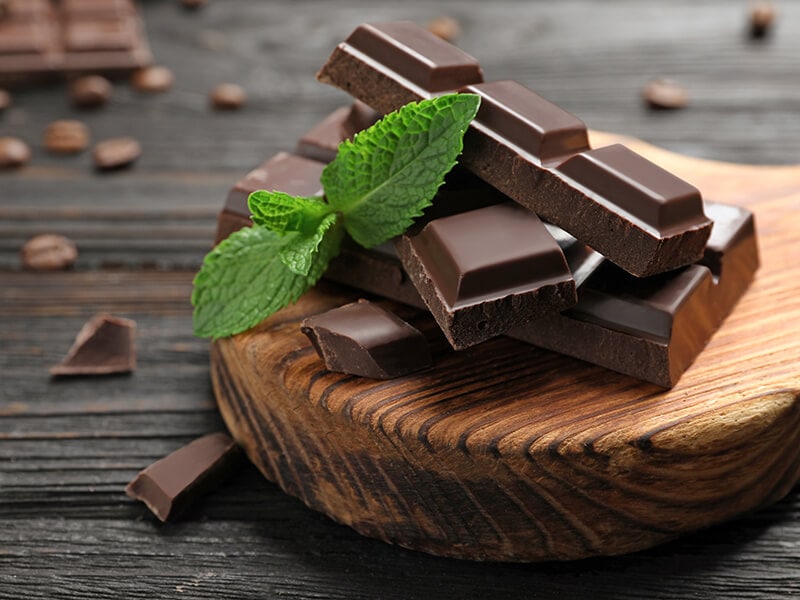
Dark chocolate comprises 50-90% cocoa powder, cocoa butter, and sugar (3). The process of making it is similar to that of cocoa powder. The difference appears when cacao paste is mixed with sugar and dairy. Through a solidification stage, it becomes a chocolate bar.
Dark chocolate is also bitter but milder than cocoa powder alone. The percentage of cocoa powder will determine the bitter level of dark chocolate. The higher it is, the more intense the chocolate tastes.
Natural cocoa powder is sugar-free, so you should choose the unsweetened or less-sugar option. Even then, you’ll need to reduce the amount of sugar in your recipe. Replace 2 tablespoons of melted dark chocolate with 3 tablespoons of melted dark chocolate.
When substituting, remember that cocoa powder is a dry ingredient and melted chocolate is a wet one. Therefore, you should adjust the measurement of other liquid ingredients properly.
Wanna know how to make a super moist chocolate cake with dark chocolate? Check out this recipe for detailed directions.
6. Chocolate Chips
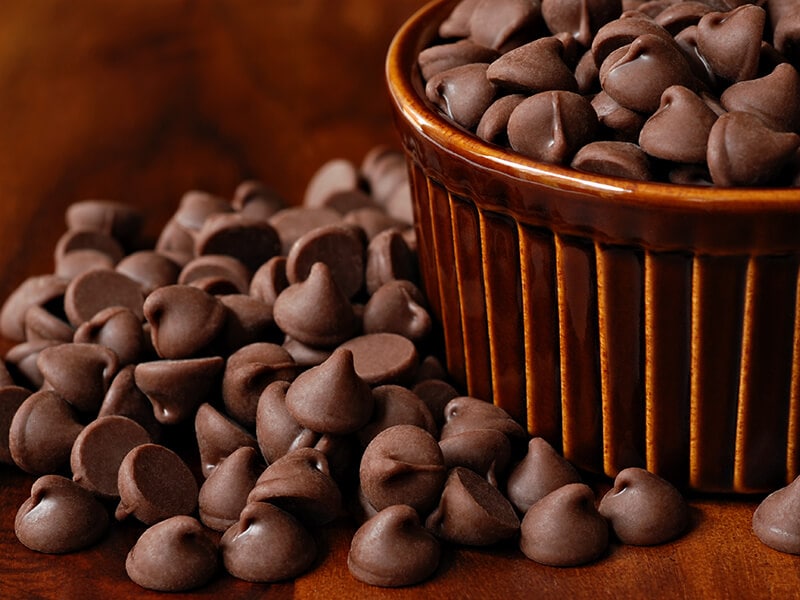
Grinding or melting chocolate chips creates a good substitute for cocoa powder. If you have a food processor or a blender, take advantage of them. Or, you can place your chips in a sealed plastic bag and roll them with a baking pin.
Nonetheless, chocolate chips are not processed to remove cacao butter. Remember to adjust the suitable proportion with recipes featuring fats such as butter, lard, or oil.
You can use unsweetened, sweetened, or semi-sweetened types for this substitute. The only thing you have to mind is the disparity between the sweetness level of each type.
Overall, for every 3 tablespoons of cocoa powder, use half of a cup of ground chocolate chips.
7. Couverture chocolate
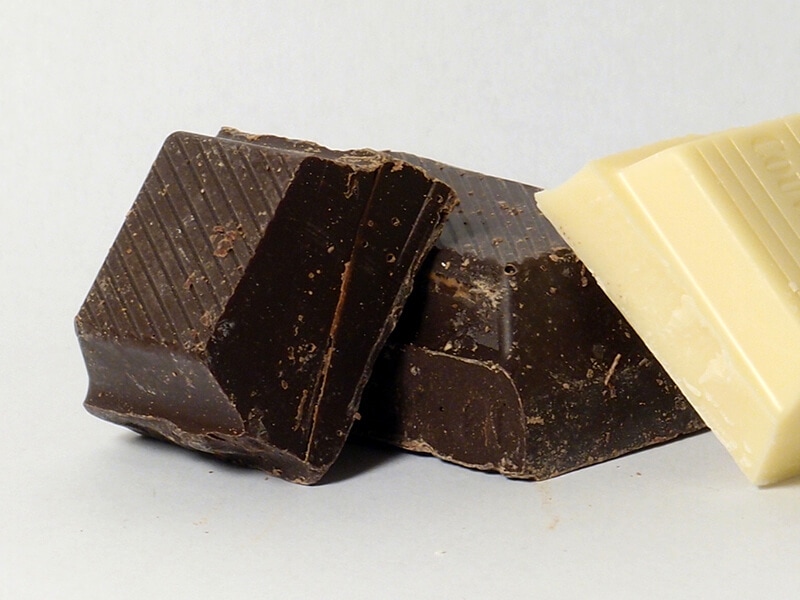
Couverture chocolate is a combination of cocoa butter and cocoa solid.
While the fat content of cocoa butter is between 10 and 24%, couverture chocolate must have at least 35% cocoa solids and 31% cocoa butter. It is smoother and melts faster, making it a great choice for dipping chocolate.
This might be an advantage for couverture chocolate when it comes to baked goods, but if not handled properly, your food can end up with a lot of fat. Reducing the level of fat from the rest of the components is necessary.
You will need 2 tablespoons of melted couverture chocolate to make up 3 tablespoons of cocoa powder.
8. Cacao Powder
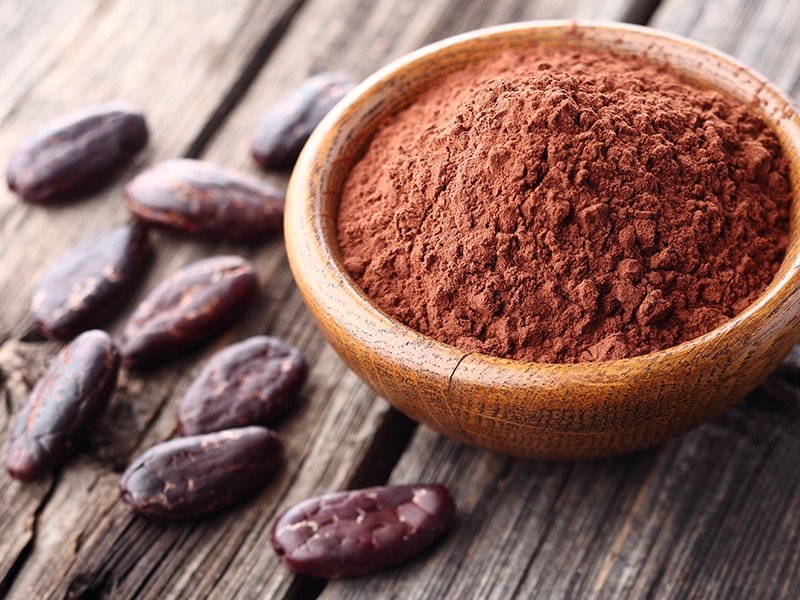
Since the cocoa powder is one of the products from the cacao tree, you can replace it with other cacao commodities, such as raw cacao powder.
Raw cacao powder is essentially an unrefined version of cocoa powder. People grind cacao beans directly without roasting. Therefore, it retains fats and the original bitterness of cacao. The minimum processing also allows cacao powder to keep its healthy substances.
Raw cacao powder comprises very little or no added sugar and is more absorbent than cocoa powder. So, it’s essential to increase the sugar and liquid of your foods to have a more balanced taste.
No need to bake! These cacao powder energy bites won’t take you more than 10 minutes to make.
9. Cacao Nibs
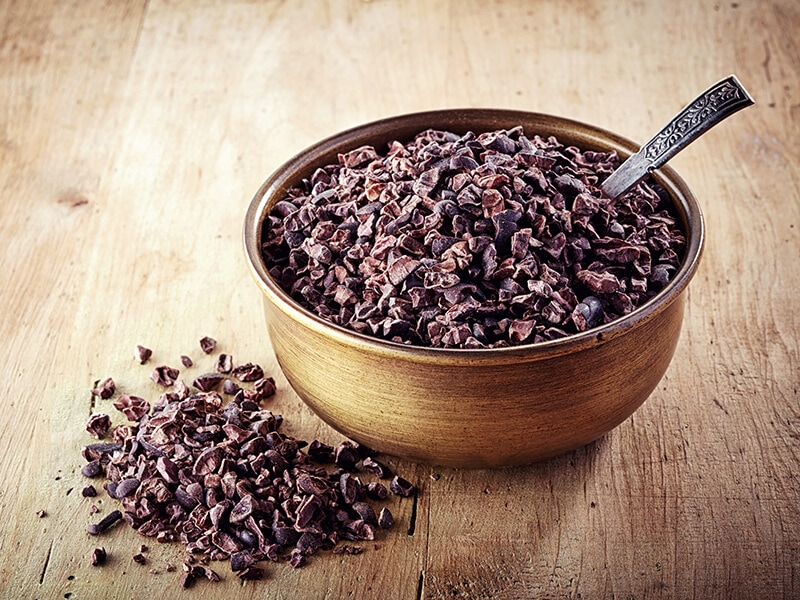
Similar to cacao powder, cacao nibs have a rich chocolate flavor and are sugar-free. That said, you will have to grind them to get the desired texture. Food processors or coffee grinders will do the job for you.
1 tablespoon of cocoa powder equals 1 tablespoon of cacao powder and 1 tablespoon of ground cacao nibs.
10. Hot Cocoa Mix
Like dark chocolate, the hot cocoa mix has a wide range of varieties with different cocoa powder contents. Other than the powder, it also consists of sugar, dry milk, salt, and artificial flavorings.
It’s best to double the amount to use the hot chocolate mix as an alternative to cocoa powder. 2 teaspoons of hot chocolate mix will give you a similar taste to 1 teaspoon of cocoa powder.
Since it already has sugar, you must adjust the milk and sugar in the recipes depending on the cocoa percentage on the packet’s label.
11. Chocolate Syrup
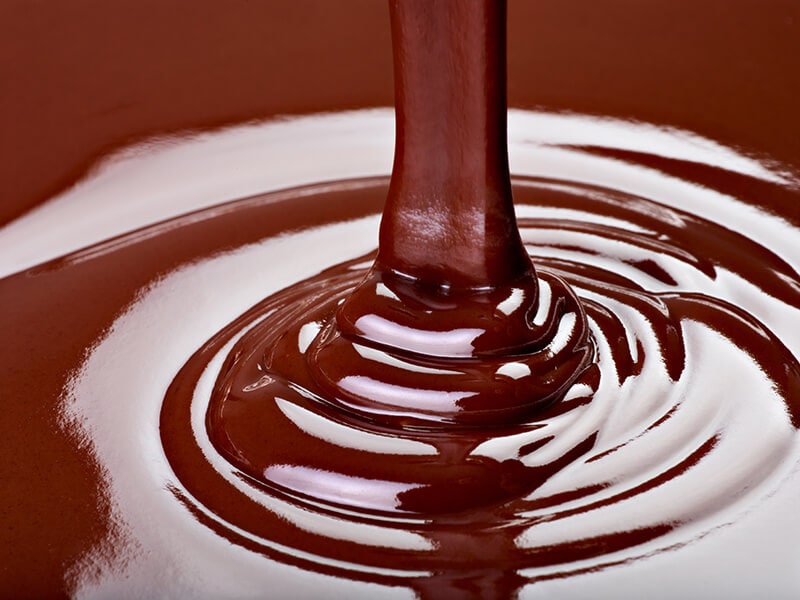
Chocolate syrup consists of cocoa powder and water, with a percentage of cocoa ranging from 9-11% by weight.
Besides, it also contains artificial flavorings and a lot of additives. This may affect the quality of your food if your recipes call for a small amount of cocoa powder. Typically, a tablespoon of cocoa powder is equivalent to 1 tablespoon of dark chocolate syrup.
What’s more, as adding this condiment means increasing amounts of liquid, be sure to cut off the same amount of water.
12. Nutella
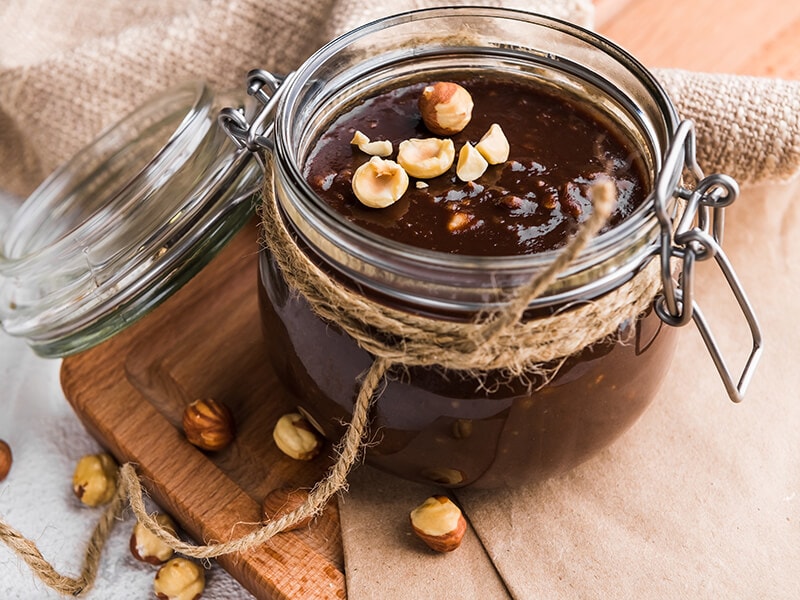
Nutella contains cocoa, lecithin, palm oil, flavoring, sugar, and skimmed milk. It is a perfect combination of hazelnuts and cocoa flavor with a creamy texture.
When eating Nutella, you will taste not only the slight bitterness of cocoa but also the sweetness and some notes of musty and earthy.
The components may vary among countries, but sugar and palm oil remain the same. People use Nutella on their breakfast toast, ice cream, or in chocolate cakes and cheesecakes.
The cocoa content in Nutella is less than 10%. Therefore, you won’t taste much bitterness. 3 tablespoons of cocoa powder will make up about 4 ounces of Nutella. Remember the rule, more sugar in the substitute means less sugar in other ingredients.
Homemade Nutella is straightforward to make with only simple ingredients.
13. Chocolate Protein Powder
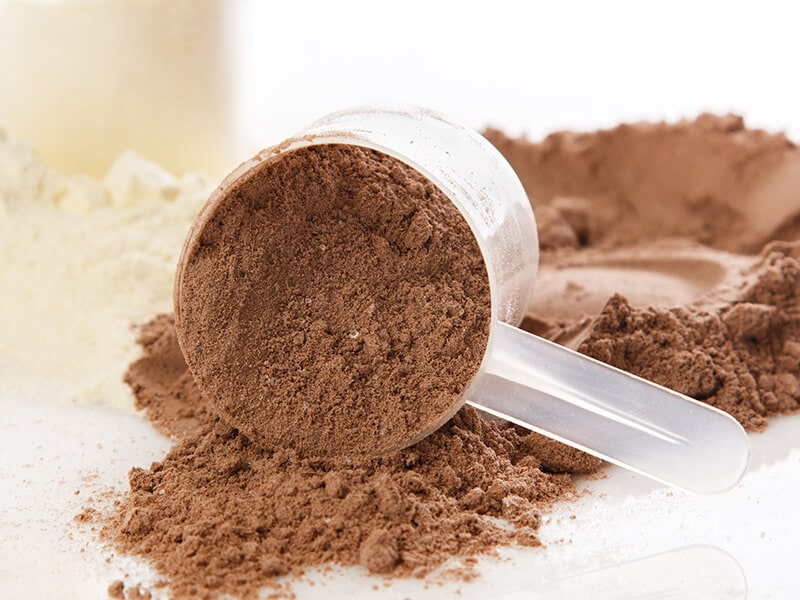
Chocolate powder includes cocoa powder, sugar, creamer, and other additives. There are various types of chocolate powder on the market, from unsweetened to chocolate milk powder, depending on the percentage of cocoa content.
Chocolate protein powder makes a decent substitute for cocoa powder, especially for people who want a healthy diet.
However, it’s fairly low in cocoa, so its flavor is not as bold as cocoa powder. In addition, the other ingredients in protein chocolate powder, such as whey, can alter the flavor and texture of your food.
Nevertheless, if that’s not your problem, use a ratio of 1:1 for this chocolate-flavored protein powder.
14. Chocolate Malted Milk Powder
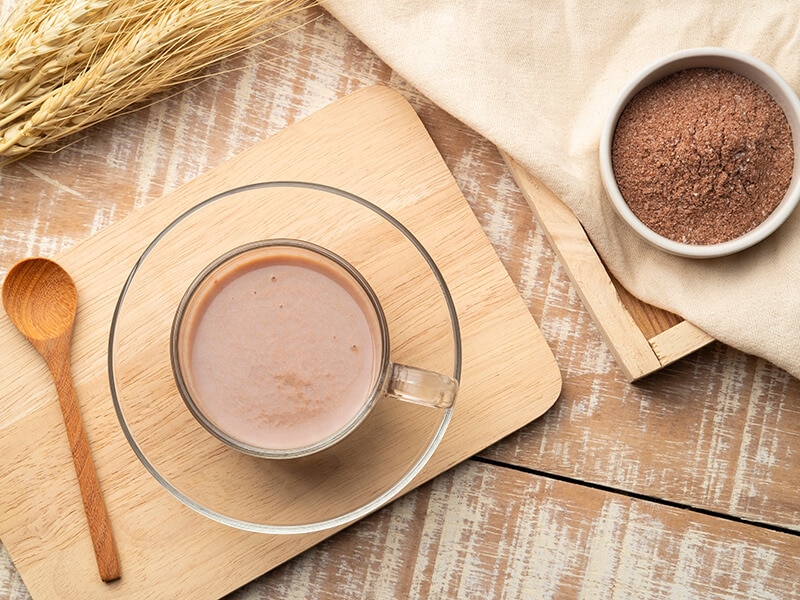
Chocolate malted milk powder can also be a substitute for cocoa powder. It works well in baking desserts such as puddings, cakes, or brownies.
Although the result won’t have a strong chocolate flavor, the overall note of your recipe can be enhanced by the creamy and milky taste thanks to the chocolate malted milk powder.
Use 2 tablespoons of it in place of 3 tablespoons of cocoa powder and lower the amount of sugar by 1 tablespoon for every tablespoon of the milk powder you add.
15. Espresso Powder
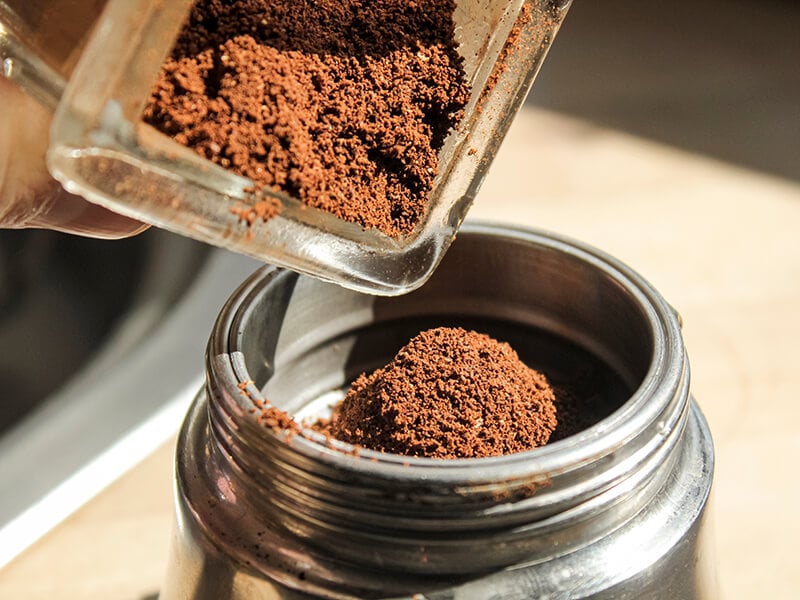
After drying, roasting, and grinding, espresso powder is the final product of coffee beans. It is dark in color and has a strong bitter taste.
For baking recipes, espresso powder makes an amazing replacement for cocoa powder as it can trigger the reaction with baking soda and result in a soft, fluffy cake.
Its only disadvantage is the level of caffeine. If you are sensitive to caffeine or intend to make a dessert for your children, opt for the other alternatives. When using espresso for cocoa powder recipes, a 1:1 ratio is advisable.
Why don’t you try making homemade espresso powder? It’s quick and extremely easy to do!
16. Molasses
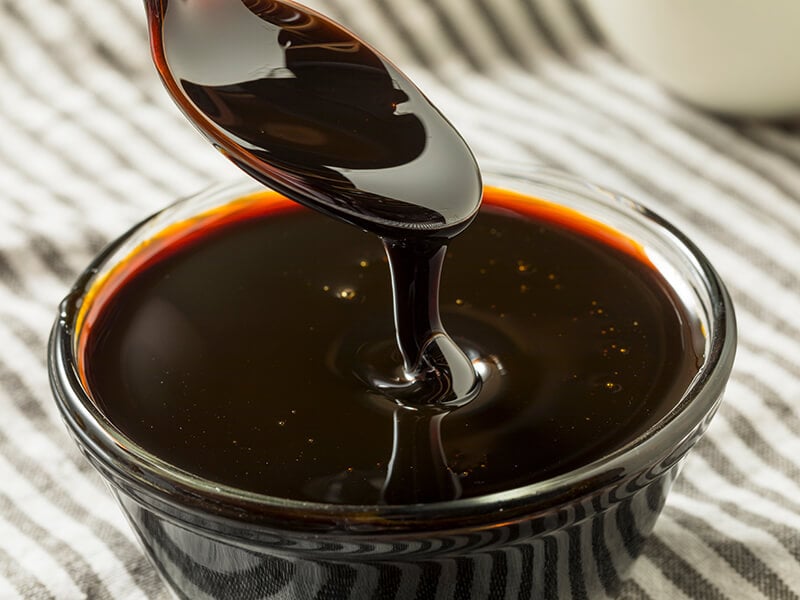
Molasses is a sweetener made from the extracted juice of sugar beet or sugar cane. It has a viscous texture and a dark color. The flavor of molasses is considered to be sweet and almost smoky.
This sweetener can add moisture and color to your baked goods, but it can sometimes be used as a thickening agent for soups and sauces.
It is nutty and slightly acidic. When using molasses in cocoa powder recipes, decrease the quantity in half. For that, 2 tablespoons of cocoa powder equal 1 tablespoon of molasses.
17. Hot Chocolate Mix
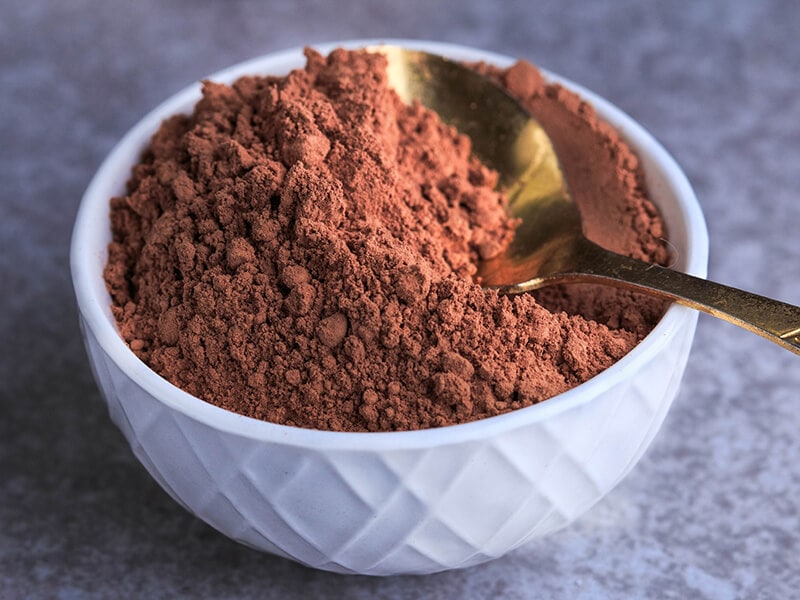
Don’t mistake this variety for the hot cocoa mix! They are different in mainstay ingredients. The hot chocolate mix does not have cocoa solid, but it contains chocolate instead (a mixture of cocoa powder, cacao butter, and other ingredients).
Due to that reason, the hot chocolate mix is sweeter and thicker than the hot cocoa mix. It also has a bitter chocolate flavor like cocoa powder, so you don’t have to worry about the difference in taste.
2 teaspoons of the chocolate mix can replace 1 teaspoon of cocoa powder.
FAQs
Do you think that’s all you need to know about cocoa powder substitutes? Big mistake! There is a lot more to find out. Check out these most frequently asked questions, and you’ll know!
The Best Cocoa Substitute Is Up To You!
Let’s admit it! The finest substitutes for cocoa powder are the ones that offer you the most convenience. These substitutes are your best bet if they’re within your reach.
There are a lot of cocoa alternatives you can choose from. Each of them provides some great advantages. However, it also has limited aspects. Depending on how readily available they are in your kitchen, you could find your way to cope with any cocoa powder recipes.
Have you ever used any of these substitutes for your recipes? How well did it turn out, then? I bet other readers are as curious as I do. So, leave a comment below and let others know about your experience. Don’t forget to share the post, too!
References
- En.wikipedia.org (2022), Theobroma cacao
- Healthline.com (2018), Carob Powder: 9 Nutrition Facts and Health Benefits
- Hsph.harvard.edu(2022), Dark Chocolate






